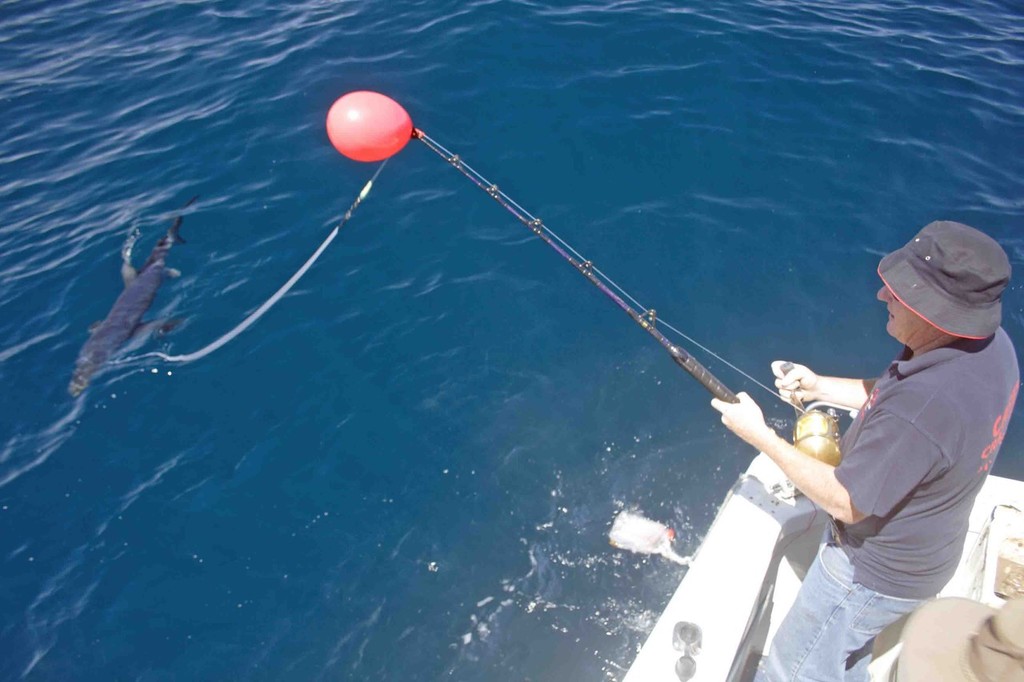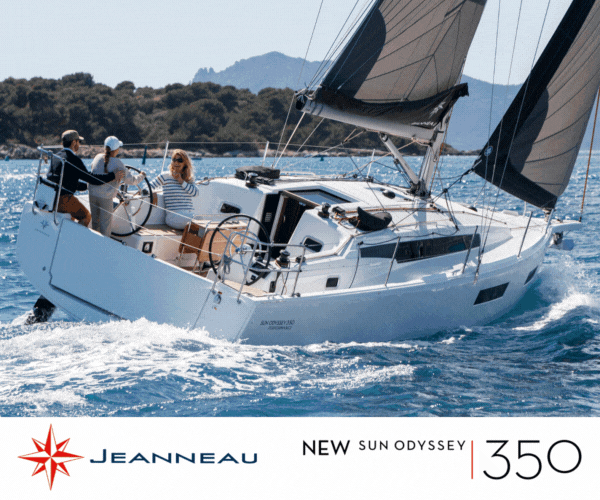Victoria’s offshore options – Part two
by Jarrod Day on 22 Aug 2012

Wrestling a Blue Shark to the boat. Jarrod Day
In the big blue:
Unlike other states, the further you venture into Bass Strait the flatter and more baron the bottom becomes. If you’re lucky enough to know one or more of the handful of reefs that exist then you’re sure to pick up kings, snapper, morwong and salmon amongst others. For those that don’t, you’ll have to contend with the huge schools of barracouta, flathead and arrow squid that you can’t escape from. While bottom bashing in the deep is fairly limited, those who do are usually fishing for a feed of flathead while drifting for sharks.
Drifting is the most common method to cover a larger area. Anglers choosing to target sharks need to set a berley trail of mashed fish and tuna oil through the pot.
Live baiting is also effective but you’ll have to spend the time trolling for barracouta and salmon around the inshore reefs or fish for arrow squid and barracouta in your established berley trail. If you do place out a few livies, special rigging techniques will need to be known to ensure your live baits stay alive for as long as possible. The last thing you need is to have you livies dying because you keep putting the hooks in the wrong place.
Due to the shallowness of the Strait, you don’t need to go out armed with heavy tackle. Some big toothies lurk in these waters but on average there is a multitude of fish ranging 30 to 50 kilos. Fish of this size fight well but are more likely to bust you off than run you out of line.
Having a selection of outfits available will allow you to set out baits according to a fish’s size. You should have at least one 24kg outfit rigged with a whole salmon or tuna, this is for the big beasts. Two 15kg outfits are ideal for smaller fish when using whole mullet, small salmon or half sized baits.
My favourite outfit is a Texalium 8-10 kg short stroker with a Black Magic BMX reel. Spooled with 8 kg, it may be a little light on bigger fish but is a lot of fun when tackling blue sharks and Mako’s ranging in the 20-40kg bracket.
Occasionally you can come into contact with various other toothies, thresher, bronze, seven gill and school sharks will take even the smallest of baits if they are close by. Many anglers are met with a bite off and think it’s barracouta in the trail. Although this is a possibility, it doesn’t hurt to carry a paternoster rig made from 170lb wire. Using a wire paternoster isn’t going to deter other species and your more likely going to land the toothie that you hooked.
Trolling options: Trolling is a method not often utilized in Bass Strait. For some reason, most anglers head out wide to the target sharks or stick in close catching flathead.
Trolling small minnow type lures can reveal some great catches, particularly with barracouta, pike, snook, salmon and kingfish the mainstay. I have even heard of a thresher shark taking a trolled lure but although rare, is still a possibility.
Trolling depths should be concentrated between 10 to 20 metres of water as the majority of southern pelagic species inhabit this terrain.
Your lure spread should contain a range of lures that dive to different depths to cover all water columns to maximise your success. Alternatively, small skirted lures can also be thrown in but diving hardbodies will see most of the action.
Trolling the coast isn’t limited to season either. Pike, snook, salmon and barracouta are a year round option, so even if you in it for a bit of fun, heading out for a trolling session can be very entertaining.
The fishing options are endless in Bass Strait, though it might be fun hooking into the various shark species have a go at the inshore reefs, and you’ll be pleasantly surprised at how much fun fishing the reefs can be.
If you want to link to this article then please use this URL: www.sail-world.com/101303

